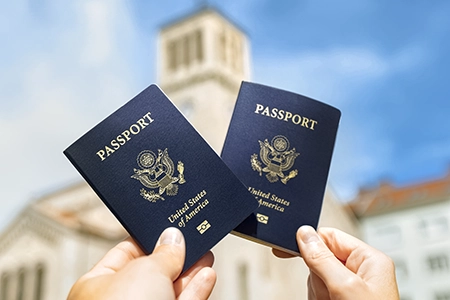In our increasingly interconnected world, the role of a professional translator has evolved beyond the simple conversion of text from one language to another. Today, it encompasses a deeper, more nuanced responsibility: navigating the cultural landscapes that shape our communication. This pivotal role demands linguistic expertise and a profound understanding of cultural sensitivity in translation.
Cultural sensitivity, within the realm of translation, is the translator’s ability to effectively and respectfully convey the meaning of the source material in an accurate and culturally appropriate manner for the target audience. It’s about recognising that words and phrases are imbued with cultural significance, which can vary dramatically across different societies. The absence of such sensitivity can lead to miscommunication, misunderstandings, and sometimes unintentional offence.
As the world becomes smaller and more diverse, the demand for culturally sensitive translation is increasing. From multinational corporations to international diplomacy, the need for translations that respect and acknowledge cultural differences is paramount. This blog post aims to delve into the intricate relationship between language, culture, and translation, highlighting cultural sensitivity’s challenges and immense importance in this field. Through this exploration, we will uncover why professional translators are not just language experts but also crucial ambassadors of cultural understanding.
Defining Cultural Sensitivity in Translation
Cultural sensitivity in translation extends far beyond a word-for-word rendering of texts. It involves a deep appreciation of the cultural context and the subtle nuances that give the language its true meaning. At its core, cultural sensitivity is the skill of recognising and respecting the cultural differences that influence how people interpret messages. This skill is critical for any professional translator seeking to convey the literal meaning of words and their intended impact and significance in the target culture.
A culturally sensitive translation respects the target audience’s norms, values, and beliefs. It avoids cultural appropriation and stereotypes, instead embracing the uniqueness of each culture. This approach ensures that the translation is linguistically accurate and culturally resonant. It’s about finding the delicate balance between staying true to the source material and adapting it in a way that is accessible and relevant to the target audience.
Understanding cultural sensitivity in translation also involves recognising the potential for cultural bias and working to mitigate it. It’s about acknowledging that every language carries cultural assumptions and values, which can inadvertently affect how translations are received. The role of the professional translator, therefore, involves being a cultural mediator – someone who bridges the gap between different cultural perspectives, ensuring clear and effective communication.
This nuanced understanding of cultural sensitivity elevates a translation from a mere linguistic exercise to a powerful tool for cross-cultural communication. Translations can resonate more deeply with the target audience, fostering better understanding and empathy across cultural boundaries.
The Challenges of Cultural Sensitivity
Navigating the complexities of cultural sensitivity presents a unique set of challenges for the professional translator. One of the foremost challenges is the inherent subjectivity of culture. Culture shapes language in ways that are often abstract and deeply rooted in history, traditions, and social norms. A translator must understand these cultural nuances and how they influence language use, which can be daunting, especially when dealing with languages that span multiple cultures or regions.
Another significant challenge lies in avoiding cultural biases and stereotypes. Every culture has its own stereotypes and preconceptions, and it’s too easy for these to seep into translations through word choice or phrasing. Translators must remain constantly vigilant against these biases, ensuring their translations are free from stereotypes and accurately and respectfully reflect the culture.
Furthermore, idiomatic expressions and colloquialisms present a unique hurdle. Such phrases often have no direct equivalent in other languages and are deeply rooted in cultural context. Finding a way to convey the same meaning and tone in the target language without losing the cultural essence of the original requires not only linguistic skill but also a deep understanding of both the source and target cultures.
The dynamic and evolving nature of language adds another layer of complexity. As societies evolve, so do their languages and cultural references. A professional translator must stay updated with these changes to ensure that translations remain relevant and culturally sensitive.
Lastly, balancing cultural sensitivity with the need to remain true to the original text is challenging. This balancing act requires a nuanced approach, where the translator must decide how much to adapt the text to fit the cultural context of the target audience while still preserving the author’s original intent and message.
These challenges highlight the intricacy of cultural sensitivity in translation. It’s a field that demands linguistic expertise and a deep understanding of and respect for cultural diversity. Overcoming these challenges makes a translator a linguistic expert and a cultural connoisseur.
The Role of the Translator
The role of a professional translator extends far beyond the basic task of converting text from one language to another. It involves acting as a cultural mediator, bridging linguistic and cultural divides to facilitate clear and accurate communication. This role is multifaceted and requires a deep understanding of the languages involved and the cultures they represent.
A key aspect of this role is the ability to interpret the source material in a way that respects and conveys the original message’s nuances, tone, and intent within the cultural context of the target audience. Translators must navigate cultural sensitivities, avoiding stereotypes and biases while ensuring the translation is culturally appropriate and resonant.
Moreover, translators are responsible for recognising and addressing potential cultural misunderstandings. They must identify cultural references that may not translate directly and find creative ways to convey these concepts in the target language.
In addition, staying abreast of changes in the source and target languages and cultures is crucial. Languages evolve, and cultural norms shift, making continuous learning and adaptation necessary for a translator’s role.
Ultimately, the translator’s responsibility is to provide a linguistically accurate and culturally informed translation. This makes them linguistic experts and key players in facilitating cross-cultural understanding and communication.
Strategies for Culturally Sensitive Translation
To ensure culturally sensitive translation, professional translators can employ several strategies:
- Research and Understand Cultures: Understanding the source and target cultures is vital. This involves researching cultural norms, values, idioms, and historical contexts to ensure accurate and respectful translation.
- Consider Context and Audience: Tailor translations to the specific context and audience, considering factors like age, education level, and cultural background to make the content relevant and appropriate.
- Avoid Direct Literal Translation: Literal translations often fail to convey the intended meaning. Focus on the essence of the message, considering cultural connotations and nuances.
- Engage in Continuous Learning: Cultures and languages are dynamic. Engaging in ongoing education and staying updated on cultural and linguistic changes is crucial for accurate translations.
- Seek Feedback from Native Speakers: Collaborating with native speakers or cultural experts can provide valuable insights and help avoid misunderstandings or offensive translations.
- Use Cultural Adaptation When Necessary: Sometimes, it’s necessary to adapt certain elements (like idioms or cultural references) to suit the target audience better while maintaining the original message’s integrity.
- Be Aware of Non-Verbal Elements: Non-verbal communication, such as gestures or imagery, may need adaptation to align with cultural norms in the translation.
Implementing these strategies can greatly enhance the quality and effectiveness of translations, ensuring they are culturally sensitive and resonate well with the intended audience.
Impact on Global Communication
Culturally sensitive translation plays a crucial role in global communication, significantly impacting various sectors such as international business, diplomacy, media, and education. By ensuring that translations are linguistically accurate and culturally appropriate, translators help facilitate clearer and more effective cross-cultural interactions.
In the business world, accurate and culturally sensitive translations can lead to successful international partnerships, brand expansions, and customer satisfaction. Diplomatically, they prevent misunderstandings and foster better international relations—media and education aid in accurately disseminating information and knowledge respecting cultural diversity.
The culturally sensitive translation is vital for promoting mutual understanding and respect in an increasingly interconnected world. It helps to bridge cultural divides, making global communication more inclusive and effective.
Final Word
In conclusion, cultural sensitivity in translation is not merely an added skill but a fundamental necessity in our globally connected society. It demands a profound understanding of both language and culture, enabling translators to convey words and bridge cultural divides. This blog post has highlighted the importance of cultural sensitivity, showcasing its impact through real-world examples, challenges, and strategies. As we have seen, the role of the professional translator is pivotal in fostering effective global communication. The culturally sensitive translation goes beyond mere words; it’s about building understanding and empathy across cultures, making it an indispensable tool in our diverse world.

Before you go…
Looking for superior translation services that are fast, precise, and budget-friendly? Look no further! We offer top-notch translation solutions at unbeatable rates. Contact us now to get a quote and let us help you communicate effectively in any language.
Further Reading:
- Equality, Diversity and Inclusion, Chartered Institute of Linguists
Follow Us on Your Favourite Social Network




